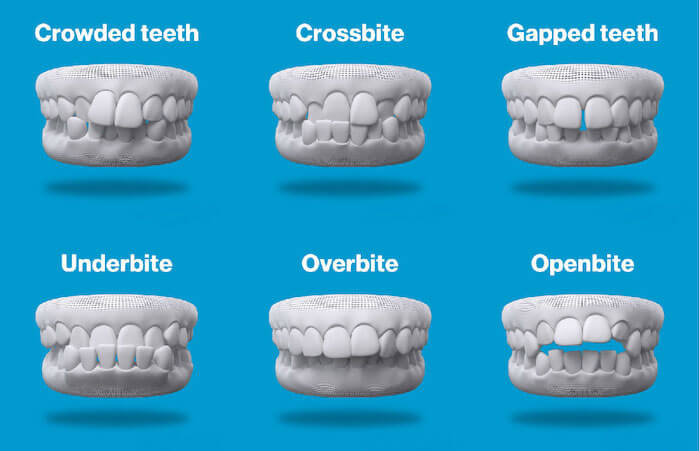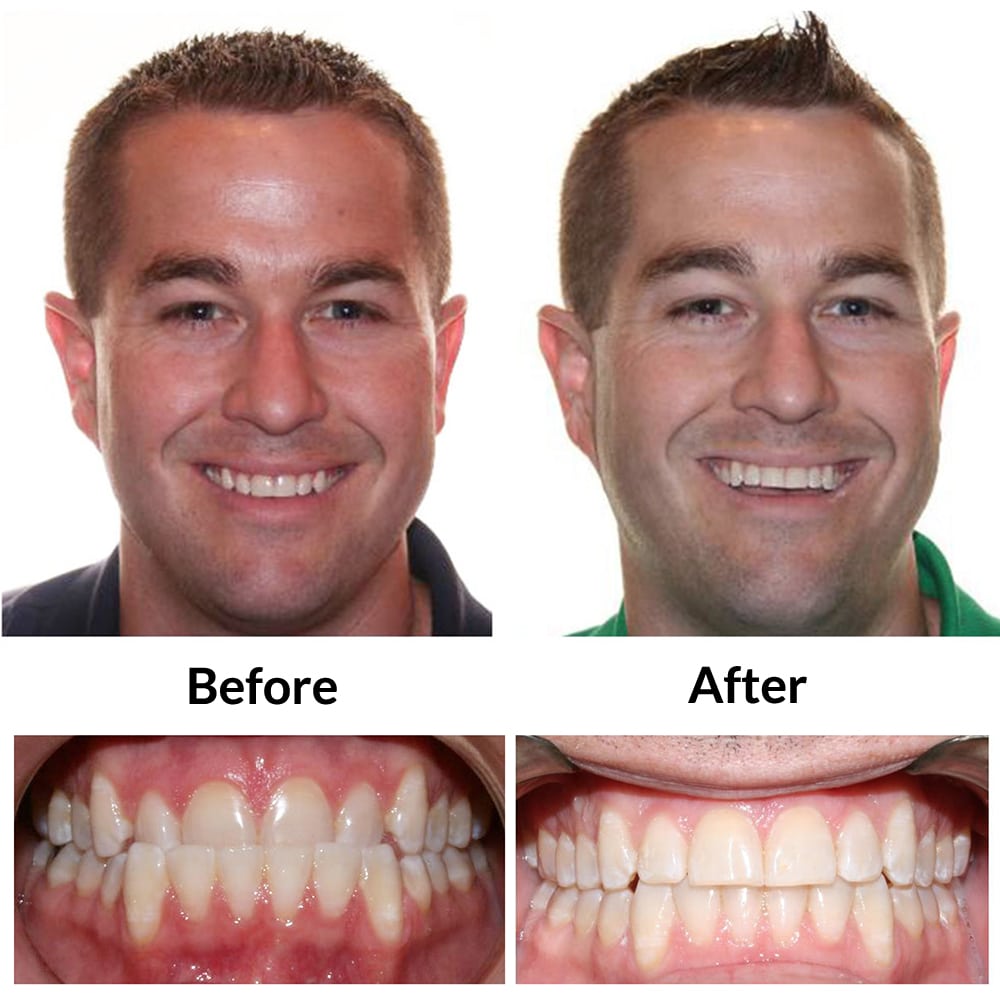Success Stories: How Invisalign Changed Lives and Enhanced Confidence
Success Stories: How Invisalign Changed Lives and Enhanced Confidence
Blog Article
Invisalign vs. Typical Braces: Which Option Is Right for You?
When taking into consideration orthodontic therapy, the choice between Invisalign and standard dental braces offers several essential aspects that warrant mindful evaluation. Invisalign provides a very discreet choice with removable aligners, while conventional braces supply an extra noticeable yet effective solution for severe misalignment. Each option encompasses distinct benefits and drawbacks related to visual appeals, comfort, treatment duration, and expense. Comprehending these nuances is vital for making a notified choice that lines up with your personal preferences and lifestyle. The inquiry continues to be: which alternative will ideal satisfy your orthodontic requirements and expectations?
Introduction of Treatment Alternatives

In contrast, standard dental braces consist of steel braces and wires that are bound to the teeth. This approach applies constant stress over time to achieve positioning. While reliable for complex orthodontic concerns, typical braces need routine visits for modifications and can present obstacles in maintaining dental health because of the trouble of cleaning around cables and brackets.
Both options have their benefits, and the option frequently pivots on particular dental conditions, way of life preferences, and person conformity. Ultimately, getting in touch with an orthodontic professional is critical for identifying the most suitable treatment strategy customized to individual demands. Understanding the subtleties of each alternative can substantially influence the general success of orthodontic treatment.
Visual Considerations
A considerable aspect influencing the option between Invisalign and traditional braces is the visual allure each therapy uses. Invisalign aligners are crafted from clear plastic, making them essentially undetectable when used. This discreet look is specifically attracting teenagers and grownups that may feel awkward concerning their orthodontic therapy. The ability to maintain an all-natural smile throughout the positioning process can significantly boost the individual's confidence in specialist and social settings.
On the other hand, traditional dental braces contain steel brackets and cords, which can be much more recognizable. While improvements in orthodontic technology have actually led to the growth of smaller braces and colored elastics, standard dental braces still preserve an even more conspicuous account. For some individuals, the exposure of dental braces may prevent them from seeking necessary therapy.
Ultimately, the option in between Invisalign and conventional dental braces may rest on individual choices concerning visual appeals. People who prioritize discretion typically lean toward Invisalign, while those that are less worried concerning presence might go with standard dental braces. Understanding the visual implications of each choice is crucial for making a notified choice that straightens with one's lifestyle and preferences.
Convenience and Convenience

In regards to ease, Invisalign aligners are detachable, allowing patients to appreciate their favored foods without limitation and maintain optimum dental health. Brushing and flossing are streamlined, as the aligners can be secured during these routines, whereas typical dental braces require mindful navigating around brackets and cords.
In contrast, typical dental braces demand normal adjustments, making them much less hassle-free for those with hectic schedules. On the whole, the convenience and convenience of Invisalign make it an appealing choice for several individuals seeking orthodontic therapy.
Treatment Duration and Performance
While both Invisalign and conventional dental braces work in fixing oral imbalances, the period of treatment can vary dramatically in between both choices. Commonly, Invisalign treatment can take anywhere from 12 to 18 months, depending upon the complexity of the situation. The clear aligners function by progressively shifting teeth into their preferred settings, and normal follow-ups with an orthodontist aid ensure progress remains on the right track.
On the other hand, typical dental braces often require a longer commitment, typically ranging from 18 months to three years. This is because of their fixed nature and using brackets and cables, which can be much more efficient for serious misalignments and complicated situations (Invisalign). The treatment effectiveness of traditional braces is well-documented, as they enable precise changes and better control over tooth activity
Inevitably, the option between Invisalign and conventional braces may pivot on both the awaited therapy duration and the particular dental concerns handy. Consulting with an orthodontist is vital, as they can supply tailored recommendations based upon specific requirements, guaranteeing the chosen approach straightens with preferred outcomes and durations.
Price Contrast and Insurance Alternatives
Price plays a considerable role in the decision-making procedure for check these guys out individuals considering orthodontic therapy, whether choosing for Invisalign or traditional dental braces. On average, the cost of Invisalign varieties from $3,000 to $8,000, while conventional dental braces normally cost between $2,000 and $6,000. Elements influencing these costs consist of the intricacy of the case, the period of therapy, and geographical location.
Insurance protection can dramatically influence out-of-pocket expenditures. Several dental insurance strategies offer partial protection for orthodontic treatments, but the specifics can vary extensively. It is crucial for patients to review their insurance coverage plans investigate this site to determine the level of protection for either alternative. Typically, traditional braces may be a lot more regularly covered by insurance coverage strategies compared to Invisalign, which some insurance firms classify as a cosmetic treatment.
Additionally, numerous orthodontic practices supply adaptable layaway plan, making both therapy alternatives much more easily accessible. Patients ought to ask about possible financing choices and discount rates for in advance settlements. Assessing the complete price, including insurance policy benefits and repayment plans, is necessary for making an educated decision that aligns with both visual preferences and budget considerations.

Verdict
In recap, the selection in between Invisalign and conventional dental braces pivots on numerous variables, consisting of visual preferences, comfort, therapy period, and price. Invisalign provides a discreet, detachable alternative that facilitates oral health and dietary adaptability, while conventional dental braces might be preferable for intricate oral issues and typically come with a read this post here lower rate factor. Eventually, appointment with an orthodontist is important to examine specific conditions and determine one of the most suitable treatment option for achieving ideal oral positioning.
When thinking about orthodontic therapy, the selection in between Invisalign and typical dental braces provides a number of essential elements that warrant mindful assessment.Contrasting Invisalign and conventional dental braces discloses distinctive therapy choices for orthodontic modification.While both Invisalign and conventional dental braces are reliable in remedying oral imbalances, the duration of therapy can vary considerably between the two options.Expense plays a significant duty in the decision-making procedure for people thinking about orthodontic treatment, whether deciding for Invisalign or conventional braces.In summary, the selection between Invisalign and traditional dental braces hinges on several elements, including aesthetic preferences, comfort, therapy duration, and cost.
Report this page